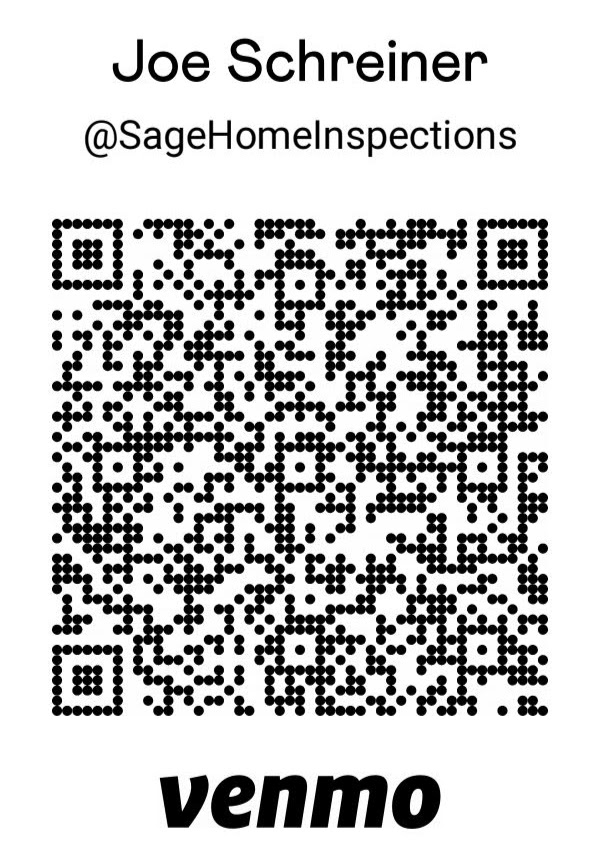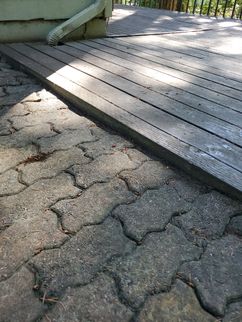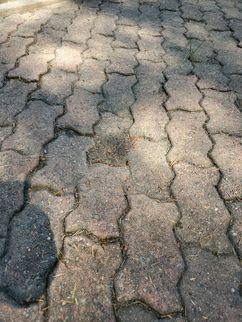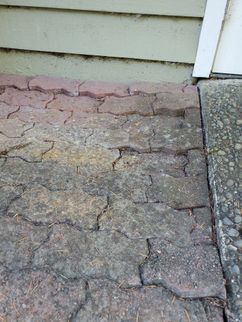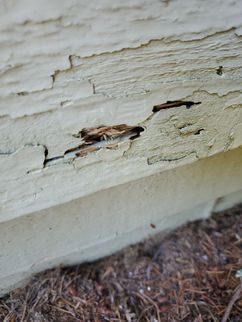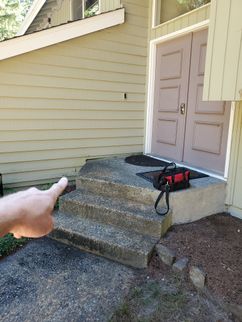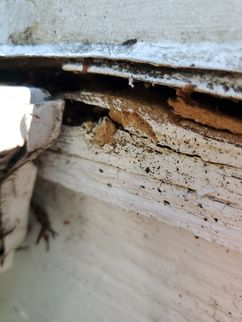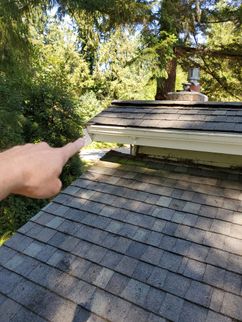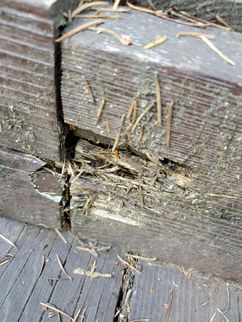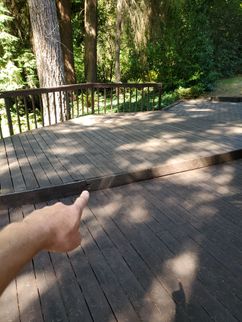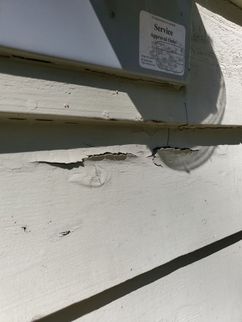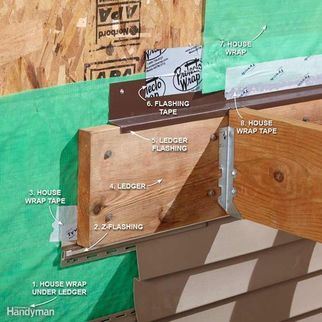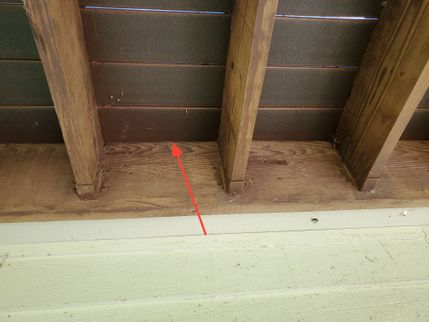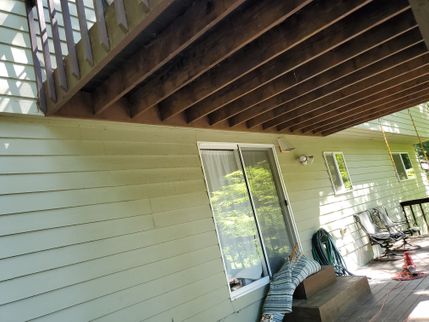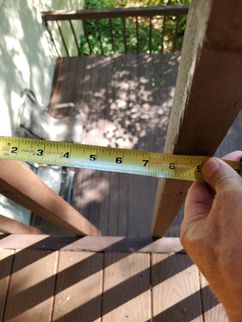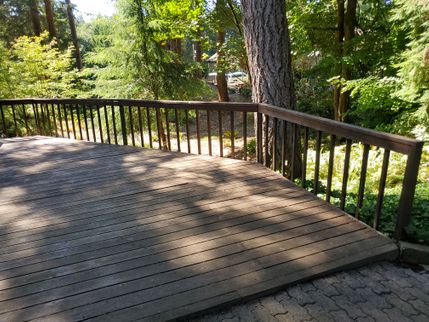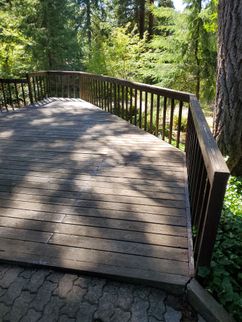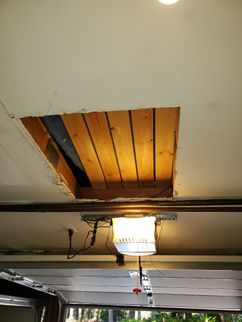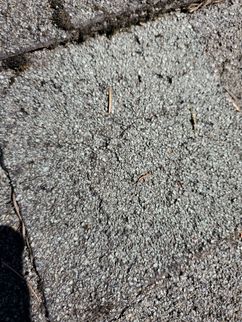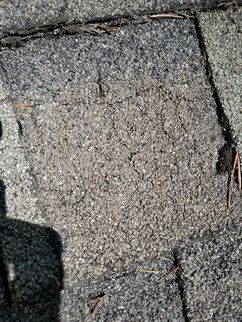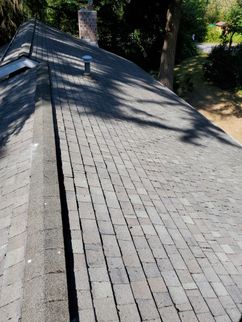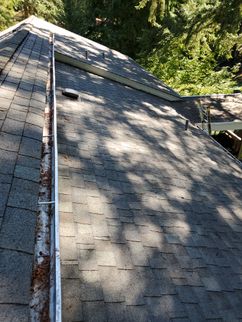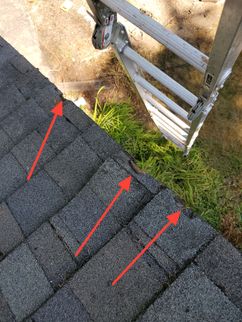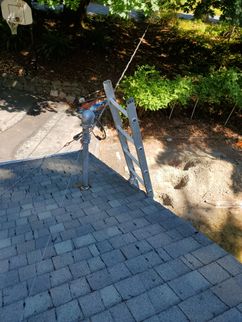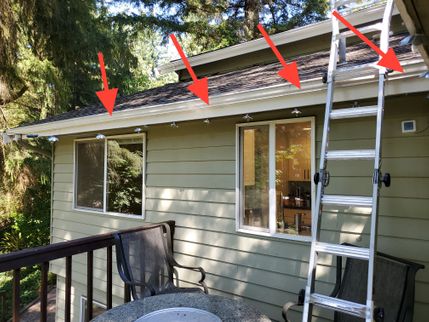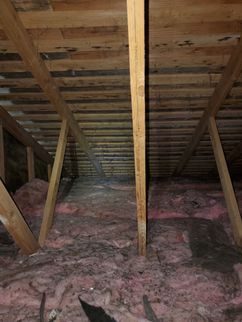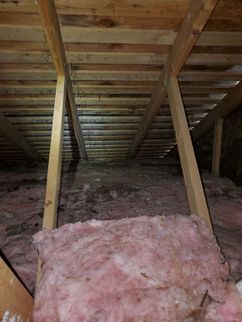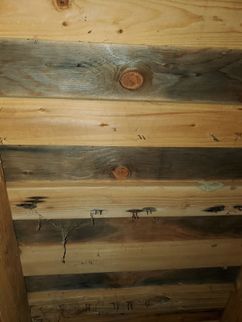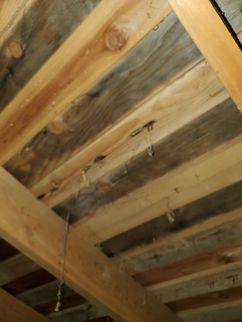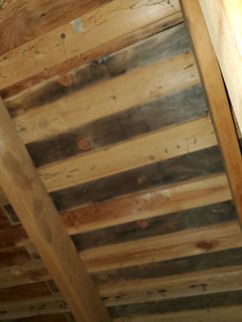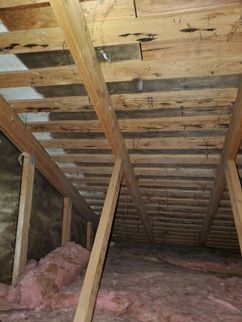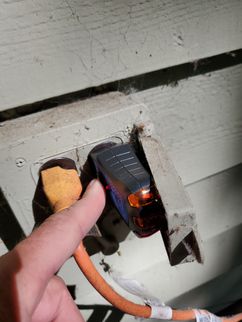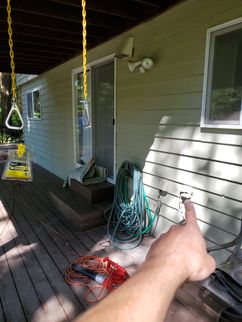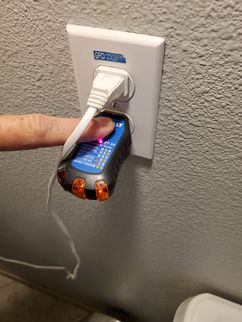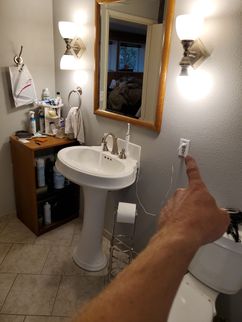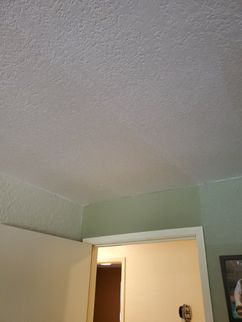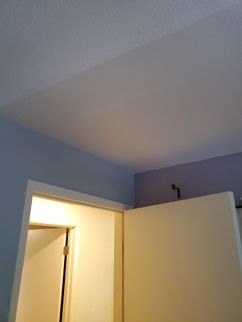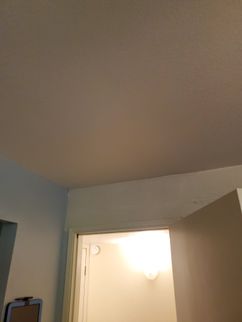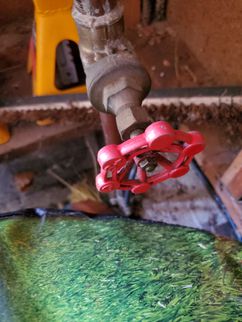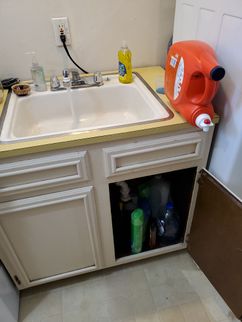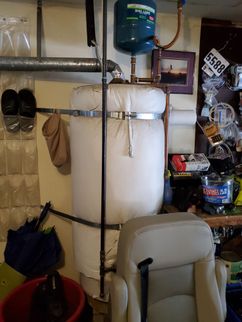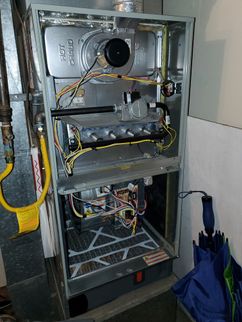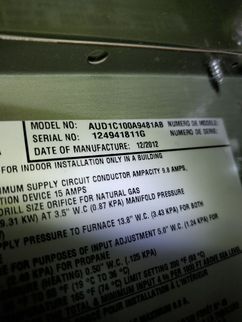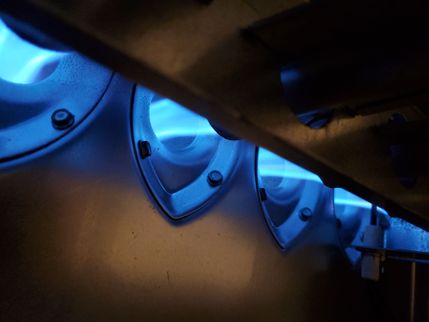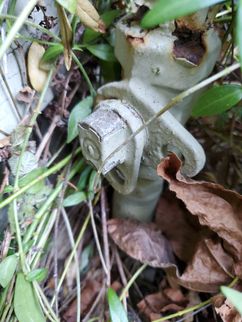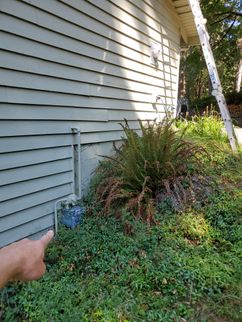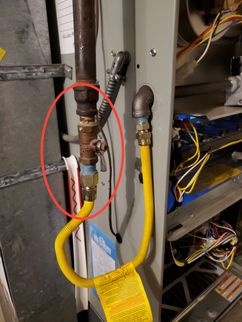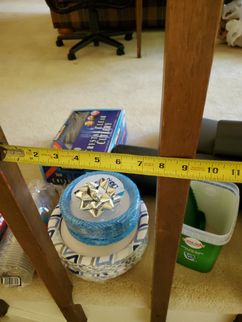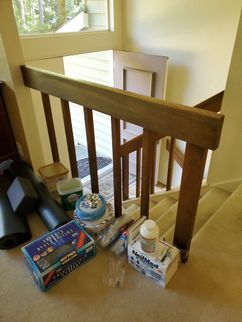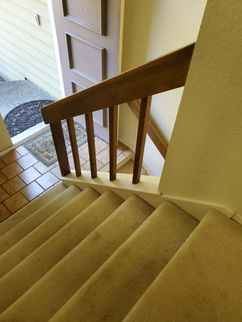How to Read This Report
Getting the Information to You
This report is designed to deliver important and technical information in a way that is easy for anyone to access and understand. If you are in a hurry, you can take a quick look at our Summary Page and quickly get critical information for important decision making. However, we strongly recommend that you take the time to read the Full Report which includes digital photographs, captions, diagrams, descriptions, videos and hot links to additional information.
The best way to get the layers of information that are presented in this report is to read your report online, which will allow you to expand your learning about your house. You will notice some words or series of words highlighted in blue and underlined – clicking on these will provide you with a link to additional information.
Chapters and Sections
This report is divided into chapters that parcel the home into logical inspection components. Each chapter is broken into sections that relate to a specific system or component of the home. You can navigate between chapters with the click of a button on the left side margin.
Most sections will contain some descriptive information done in black font. Observation narratives, done in colored boxes, will be included if a system or component is found to be significantly deficient in some way or if we wish to provide helpful additional information about the system or the scope of our inspection. If a system or component of the home was deemed to have no noteworthy defects or was in some way operational, there may be no narrative comments in that section and it may simply describe the components.
Observation Labels
All narrative observations are colored, numbered and labeled to help you find, refer to, and understand the severity of the observation. Observation colors and labels used in this report are:
- Significant Concern:Repair items that may cost significant money to correct now or in the near future, or items that require immediate attention to prevent additional damage or eliminate safety hazards.
- Due for Replacement:Systems or components that may still work but are well beyond their expected serviceable lives and should be considered for replacement/upgrade.
- Repair/Replace:These are damaged, deteriorated, or otherwise faulty items that are in need of repair.
- Routine Maintenance:These are repair items that should be considered "routine home ownership maintenance," such as servicing the furnace, cleaning the gutters or changing the air filters in the furnace.
- Improve/Upgrade:Observations that are not necessarily defects, but which could be improved or upgraded for safety, efficiency, or reliability reasons.
- Monitor:Items that should be watched to see if repair, correction, or updating may be needed in the future.
- Due Diligence:Observation such as a buried oil tank that may require further investigation to determine the severity and / or urgency of repair.
- Future Project:A repair or upgrade that may be deferred for some time but should be on the radar for repair or replacement in the near future.
- Efficiency:Denotes observations that are needed to make the home more energy efficient as well as to bring the home up to modern insulation standards. This category typically includes windows and insulation. Other items, such as lighting and appliances, are not inspected for their energy status.
- Completed:Items that were initially an issue but have since been completed.
- Note:Refers to aside information and /or any comments elaborating on descriptions of systems in the home or limitations to the home inspection.
Summary Page of Findings
The inspection findings are summarized below. They are listed by importance with substantial safety hazard at the top in red or orange. These can be life safety hazards or issues that could result in a major short-term expense to correct or possible significant expense in the future if not addressed. This summary is not a complete listing of the findings in the report and reflects the opinion of the inspector. Please review all of the report pages. All repairs must be done by the applicable qualified, licensed & bonded trades or professionals. I recommend obtaining receipts and warranties for the work done (including copies of any necessary permits).
Many of the narrative comments in the Summary have pictures and web links that better clarify the issues in the Full Report. Please refer to their place in the report body for additional clarification/information.
Summary
Repair/Replace Items
- G-1 Grounds:
The paver patio on the right side of the home has settled in places. This has made the patio out of level and less safe as a walking surface. Repair as necessary.
- EG1-1 Exterior and Garage:
Localized wood rot was noted in a couple exterior wood trim and siding boards. Implement localized rot repairs as needed.
- EG1-3 Exterior and Garage:
Ledger flashing is missing at the upper deck to house connection. This risks trapping water between the house and the ledger board, which can lead to rot and ledger attachment failure. I recommend installing flashing here to prevent moisture damage.
- EG1-4 Exterior and Garage:
The upper deck ledger board has not been bolted to the home. This risks deck failure under extreme live loads. Install bolts here for improved safety.
- EG1-6 Exterior and Garage:
The lower deck guardrail is loose. Have a qualified person repair / strengthen this deck guardrail system to ensure safe and reliable performance.
- EG1-7 Exterior and Garage:
The attic access hatch in the garage is missing drywall and will not effectively slow the spread of fire and smoke in the event of a fire in the garage. Have a piece of drywall set into this opening.
- RA-2 Roof and Attic:
Damaged shingles were noted where a ladder is leaning up against the side of the garage. Have a qualified person repair as necessary.
- RA-3 Roof and Attic:
A gutter on the rear of the home is sloped the wrong way and is holding water. Hire a qualified gutter company to reset the gutter so it is pitched properly to allow for drainage.
- E-3 Electrical:
No GFCI protection was noted at some of the garage receptacles. GFCI receptacles protect the user from electric shock in wet or damp locations such as the garage. Have a qualified electrician install GFCI protection for the garage receptacles. For more information click here.
- E-4 Electrical:
No GFCI protection was noted at one of the exterior receptacles. GFCI receptacles protect the user from electric shock in wet or damp locations such as the exterior. Have a qualified electrician install GFCI protection for the exterior receptacles. For more information click here.
- E-5 Electrical:
No GFCI protection was noted at one of the bathroom receptacles. GFCI receptacles protect the user from electric shock in wet or damp locations such as in bathrooms. Have a qualified electrician install GFCI protection for the bath outlets. For more information click here.
- E-6 Electrical:
There are no smoke alarms installed in the bedrooms. Smoke alarms are recommended on the ceiling or within twelve inches of the ceiling in all bedrooms in accordance with modern standards.
- P-3 Plumbing:
The p-trap under the laundry sink is installed backwards. This creates a trap that is too deep, which can cause debris to accumulate over time. Have a qualified plumber correct as necessary.
- P-5 Plumbing:
Corrosion was noted on one of the galvanized steel pipes on top of the water heater. Replacement of this pipe is recommended for improved reliability.
- SB-1 Structure and Basement:
The 4x4 beam holding up the deck roof appears to be undersized. Note how the 4x4 looks to be sagging slightly on either end. 4x4's are typically not used as structural beams. I recommend having a qualified person repair as necessary.
Routine Maintenance Items
- EG1-2 Exterior and Garage:
The exterior wood trim and siding paint should be touched up where it is chipping/peeling off to prevent moisture damage to the siding and trim.
- HCF-1 Heating, Cooling and Fireplaces:
Annual servicing of the gas furnace is recommended for safe and reliable heat. Records indicate that this furnace has not been serviced in the last year. The design life of these forced air furnaces is around 20-30 years when serviced regularly, and this one is 9 years old. Have a licensed heating contractor clean, service and further evaluate the furnace. Note that the furnace was tested during inspection and was fully operational.
- HCF-2 Heating, Cooling and Fireplaces:
The furnace filter is dirty and should be replaced. Going forward, this filter should be checked twice a year and replaced when necessary.
Improve/Upgrade Items
- G-2 Grounds:
An exterior set of stairs is missing a graspable handrail for safety. As a general rule, stairs with 4 or more risers should have a graspable handrail.
- EG1-5 Exterior and Garage:
The openings for the deck guardrails are larger than modern standard of 4-inches. Caution should be used, especially around small children as they can often fit their head between this space of the railing or fall between them. Improving to modern standard is recommended.
- E-2 Electrical:
Incomplete labeling of the main electrical panel circuit breakers was noted. This should be corrected for improved safety.
- FSD-2 Fuel Storage and Distribution:
A sediment trap is not installed at the gas line servicing the furnace. A sediment trap is a capped off section of gas line which is installed in such a way that any debris or moisture in the gas line will be caught in the trap. Have a qualified plumber install a drip leg here.
- I-1 Interior:
The openings in the interior guardrails are greater than 4 inches. This is typical of older homes as codes have changed over the years. If children will be present, recommend reducing gaps to 4 inches or less to bring this up to current standards for toddler safety.
- I-2 Interior:
Three of the bedrooms in this home do not conform to modern standards for egress as the windows are too high above the floor. This is common in homes of this age as egress requirements have changed over the years. Standards today say that all bedrooms must have a means of egress to the exterior in case of emergency, which is typically provided through a window that is not more than 44-inches off the floor on the inside of the house. The height of these windows is about 50". In most cases, a step of up to 9" can be built below the window to bring them into compliance as long as they are not more than 44" above the step. Please note that the garage roof ties into the house just below the two bedroom windows facing the front of the home on the main level, making it nearly impossible to lower these windows.
Due Diligence Items
- RA-6 Roof and Attic:
Dark staining was noted on some of the sheathing in the attic. This can sometimes (not always) indicate organic growth due to a number of factors, including, but not limited to, insufficient ventilation in the attic, a disconnected or leaking exhaust vent, and/or poor air sealing between the house and attic. I recommend evaluation of these areas by a specialist to determine if repairs are necessary. Repairs often include correcting any insufficient or poorly executed ventilation, repairing any damaged/disconnected exhaust ducts, air sealing around ceiling penetrations, and chemically treating the affected plywood to kill any organic growths.
- P-4 Plumbing:
The water heater is covered by an insulation jacket. I was unable to determine the size or age of the water heater as this obstructed the data plate. Inquire with the seller regarding the age of the water heater. Note that water heaters typically last about 8-12 years on average.
Efficiency Items
- RA-4 Roof and Attic:
The attic access hatch should have insulation installed on it to reduce heat loss into the attic.
Notes
- GC-1 General Comments:
This building was constructed prior to 1978 and may contain lead and/or asbestos. Lead is commonly found in paint and in some plumbing components in buildings built around or before 1978. Asbestos is commonly found in various building materials such as, but not limited to, insulation, siding, drywall textures and/or floor and ceiling tiles/adhesives. Laws were passed in 1978 to prohibit usage of lead and asbestos, but stocks of materials containing these substances remained in use for a number of years thereafter. Both lead and asbestos are known health hazards. Evaluating for the presence of lead and/or asbestos is beyond the scope of this inspection. Any mention of these materials in this report is made as a courtesy only, and meant to refer the client to a specialist. Consult with specialists as necessary, such as industrial hygienists, professional labs and/or abatement specialists for this type of evaluation. In general, the greatest risk of exposure is during renovation projects where these materials could become airborne and inhaled or ingested.
- RA-1 Roof and Attic:
The roofing material on this home is an architectural grade shingle. These are often rated as 30-year shingles, but typically need to be replaced before the 30 year mark. The surface of some of the shingles is cracked or "crazing", indicating that the shingles are starting to dry out. This is not uncommon to see on a roof of this age. I estimate the remaining useful life to be around 5-10 years.
- RA-5 Roof and Attic:
General attic pictures included below for informational/reference purposes.
- E-1 Electrical:
The electrical panel is a 200 amp, Square D brand panel. Circuit and wire sizing appears to be correct so far as visible. There are no double tapped breakers or neutrals in the panel. Pictures included below for reference/informational purposes.
- P-1 Plumbing:
For informational purposes, the main water shut-off valve is located in the garage. It is good to be familiar with its location and operation in case there is ever a leak in the home and you need to shut the water off quickly.
- P-2 Plumbing:
This home appears to employ a private septic system. Please note that an evaluation of this system is beyond the scope of this inspection. All properties on septic are required by the state to have that system inspected by a licensed On-Site System Maintainer (OSM) for the transfer of property. This is the seller's responsibility and is typically paid for by the seller. For more information about septic systems and how they work, please see this web site from the EPA - a homeowners guide to on-site septic systems: https://www3.epa.gov/npdes/pubs/homeowner_guide_long.pdf
- FSD-1 Fuel Storage and Distribution:
For informational purposes, the main gas shut off is at the meter. Turning this valve 90 degrees will shut off the gas to the whole house. I recommend keeping a crescent wrench handy for this purpose.
The Full Report
General Comments
Building Characteristics / Conditions
This building was constructed prior to 1978 and may contain lead and/or asbestos. Lead is commonly found in paint and in some plumbing components in buildings built around or before 1978. Asbestos is commonly found in various building materials such as, but not limited to, insulation, siding, drywall textures and/or floor and ceiling tiles/adhesives. Laws were passed in 1978 to prohibit usage of lead and asbestos, but stocks of materials containing these substances remained in use for a number of years thereafter. Both lead and asbestos are known health hazards. Evaluating for the presence of lead and/or asbestos is beyond the scope of this inspection. Any mention of these materials in this report is made as a courtesy only, and meant to refer the client to a specialist. Consult with specialists as necessary, such as industrial hygienists, professional labs and/or abatement specialists for this type of evaluation. In general, the greatest risk of exposure is during renovation projects where these materials could become airborne and inhaled or ingested.
Grounds
Drainage and Lot Location
Clearance to Grade: Standard
Standard
Downspout Discharge: Above grade
Above grade
Lot Description: Moderate slope
Moderate slope
Driveways/Walkways/Flatwork
Driveway: Concrete
Concrete Asphalt
Asphalt
Walkways: Concrete
Concrete
Patios: Pavers
Pavers
Window and Stairwells
 None Noted
None Noted
Grounds, Trees and Vegetation
Trees/Vegetation too near building: No
No
Exterior Stairs
Condition: Non-standard
Non-standard
Carport, Outbuildings and Other
 None noted
None noted
Exterior and Garage
Siding and Trim
Trim Material: Wood
Wood
Siding Material: Wood
Wood
Localized wood rot was noted in a couple exterior wood trim and siding boards. Implement localized rot repairs as needed.
Eaves
 Open rafters
Open rafters
Exterior Doors
 Solid core
Solid core Sliding glass
Sliding glass
Exterior Window Frames
 Vinyl
Vinyl
Decks and Balconies
 Present
Present
Deck Structure: Ground contact treated lumber
Ground contact treated lumber
Deck Ledger Board: Non-standard
Non-standard
Guardrail: Non-standard
Non-standard
Decking Material: Softwood
Softwood
Ledger flashing is missing at the upper deck to house connection. This risks trapping water between the house and the ledger board, which can lead to rot and ledger attachment failure. I recommend installing flashing here to prevent moisture damage.
The upper deck ledger board has not been bolted to the home. This risks deck failure under extreme live loads. Install bolts here for improved safety.
The openings for the deck guardrails are larger than modern standard of 4-inches. Caution should be used, especially around small children as they can often fit their head between this space of the railing or fall between them. Improving to modern standard is recommended.
Chimneys
 Present
Present
Roof and Attic
Roof Materials
Method of Roof Inspection: Walked on roof
Walked on roof
Roof Style: Gable
Gable
Roof Materials: Architectural grade composition shingle
Architectural grade composition shingle
Approximate Age of Roof: 15-20 years old
15-20 years old
The roofing material on this home is an architectural grade shingle. These are often rated as 30-year shingles, but typically need to be replaced before the 30 year mark. The surface of some of the shingles is cracked or "crazing", indicating that the shingles are starting to dry out. This is not uncommon to see on a roof of this age. I estimate the remaining useful life to be around 5-10 years.
Gutters and Downspouts
 Aluminum
Aluminum
Attic Access
 Viewed at access
Viewed at access
The attic access hatch should have insulation installed on it to reduce heat loss into the attic.
Roof Framing and Sheathing
Rafters: Truss
Truss
Sheathing: Plywood
Plywood
Attic Insulation
Insulation Type: Fiberglass
Fiberglass
Approximate Insulation R-Value on Attic Floor: 25
25
Attic and Roof Cavity Ventilation
Attic Ventilation Method: Soffit vents
Soffit vents Ridge vents
Ridge vents
Dark staining was noted on some of the sheathing in the attic. This can sometimes (not always) indicate organic growth due to a number of factors, including, but not limited to, insufficient ventilation in the attic, a disconnected or leaking exhaust vent, and/or poor air sealing between the house and attic. I recommend evaluation of these areas by a specialist to determine if repairs are necessary. Repairs often include correcting any insufficient or poorly executed ventilation, repairing any damaged/disconnected exhaust ducts, air sealing around ceiling penetrations, and chemically treating the affected plywood to kill any organic growths.
Electrical
Service Equipment
Volts: 120/240
120/240
Service Drop: Overhead
Overhead
Meter Base Amperage: 200
200
Service Entrance (SE) conductor Size: Copper, 2/0, 200 amps
Copper, 2/0, 200 amps
Main Panel Amperage: 200 amps
200 amps
Electric Service Amperage: 200 amps
200 amps
Main Electric Panel Location: Garage
Garage
The electrical panel is a 200 amp, Square D brand panel. Circuit and wire sizing appears to be correct so far as visible. There are no double tapped breakers or neutrals in the panel. Pictures included below for reference/informational purposes.
Sub Panels
 None noted
None noted
Branch Wiring
Wire Material: Copper
Copper
Wiring Method: Non-metallic sheathed cable
Non-metallic sheathed cable
Receptacles and Fixtures
Inspection Method: Random Testing
Random Testing
Electric Receptacles: Three wire receptacles
Three wire receptacles
No GFCI protection was noted at some of the garage receptacles. GFCI receptacles protect the user from electric shock in wet or damp locations such as the garage. Have a qualified electrician install GFCI protection for the garage receptacles. For more information click here.
No GFCI protection was noted at one of the exterior receptacles. GFCI receptacles protect the user from electric shock in wet or damp locations such as the exterior. Have a qualified electrician install GFCI protection for the exterior receptacles. For more information click here.
No GFCI protection was noted at one of the bathroom receptacles. GFCI receptacles protect the user from electric shock in wet or damp locations such as in bathrooms. Have a qualified electrician install GFCI protection for the bath outlets. For more information click here.
Smoke and Carbon Monoxide Detection Systems
Smoke Alarms Missing From: All Bedrooms
All Bedrooms
Grounding Electrode / Conductor
 Present
Present
Plumbing
Water Service Supply
Pipe Material: Copper
Copper
Well or Public Supply: Public water
Public water
Pressure Reducing Valve: None noted
None noted
Main Water Shut-off Location: Garage
Garage
Distribution Pipe
Supply Pipe Materials: Copper
Copper
Functional Flow: Marginal
Marginal
Waste Pipe and Discharge
Discharge Type: Septic system
Septic system
Waste and Vent Pipe Materials: ABS plastic
ABS plastic
This home appears to employ a private septic system. Please note that an evaluation of this system is beyond the scope of this inspection. All properties on septic are required by the state to have that system inspected by a licensed On-Site System Maintainer (OSM) for the transfer of property. This is the seller's responsibility and is typically paid for by the seller. For more information about septic systems and how they work, please see this web site from the EPA - a homeowners guide to on-site septic systems: https://www3.epa.gov/npdes/pubs/homeowner_guide_long.pdf
Water Heater
System Type: Tank
Tank
Energy Source: Gas
Gas
Temperature Pressure Relief Value and Drain: Present
Present
Seismic Straps: Present
Present
Expansion tank: Present
Present
Catch Pan: Not needed
Not needed
The water heater is covered by an insulation jacket. I was unable to determine the size or age of the water heater as this obstructed the data plate. Inquire with the seller regarding the age of the water heater. Note that water heaters typically last about 8-12 years on average.
Additional Sinks
 Tested
Tested
Sewage Ejector Pumps
 None noted
None noted
Sump Pumps and Drains
Floor Drain: None noted
None noted
Sump Pumps: None noted
None noted
Additional Plumbing
 None noted
None noted
Heating, Cooling and Fireplaces
Heating System
Energy Source: Natural gas
Natural gas
Heating Method: Forced air furnace
Forced air furnace
Manufacturer: American Standard
American Standard
Year Manufactured: 2012
2012
Last Service Record: 2 years ago
2 years ago
Filtration System: Disposable
Disposable
Annual servicing of the gas furnace is recommended for safe and reliable heat. Records indicate that this furnace has not been serviced in the last year. The design life of these forced air furnaces is around 20-30 years when serviced regularly, and this one is 9 years old. Have a licensed heating contractor clean, service and further evaluate the furnace. Note that the furnace was tested during inspection and was fully operational.
Cooling Systems / Heat Pumps
 None Noted
None Noted
Heating / Cooling Distribution Systems
Heat Source in Each Room: Present
Present
Distribution Method: Ductwork
Ductwork
Additional Heat Sources
 None noted
None noted
Gas Fireplaces
 Present
Present
Solid Fuel Fireplaces
 None noted
None noted
Fuel Storage and Distribution
Oil Storage
 None noted
None noted
Propane Storage
 None noted
None noted
Gas Meter
 Present
Present
Gas Shutoff Location: Side of structure
Side of structure
Gas Pipe Materials: Steel and flex pipe
Steel and flex pipe
Gas, Propane and Oil Piping
A sediment trap is not installed at the gas line servicing the furnace. A sediment trap is a capped off section of gas line which is installed in such a way that any debris or moisture in the gas line will be caught in the trap. Have a qualified plumber install a drip leg here.
Structure and Basement
Foundation
% of Foundation Not Visible: 70%
70%
Evidence of Seismic Protection: Not visible
Not visible
Building Configuration: Basement
Basement
Foundation Description: Poured concrete
Poured concrete
Floor, Wall and Ceiling Framing
Wall Framing: Not visible
Not visible
Wall Insulation: Not visible
Not visible
Wall Sheathing: Not visible
Not visible
Basement
 Partial
Partial
Basement Moisture
 None noted
None noted
Interior
Floors
Floor Settlement: None noted
None noted
Walls, Ceilings, Trim and Closets
Wall and Ceiling Materials: Drywall
Drywall
Stairs and Railings
 Non-standard
Non-standard
Interior Doors
 Hollow Core
Hollow Core
Windows
Window Glazing: Double pane
Double pane
Interior Window Frame: Vinyl
Vinyl
Three of the bedrooms in this home do not conform to modern standards for egress as the windows are too high above the floor. This is common in homes of this age as egress requirements have changed over the years. Standards today say that all bedrooms must have a means of egress to the exterior in case of emergency, which is typically provided through a window that is not more than 44-inches off the floor on the inside of the house. The height of these windows is about 50". In most cases, a step of up to 9" can be built below the window to bring them into compliance as long as they are not more than 44" above the step. Please note that the garage roof ties into the house just below the two bedroom windows facing the front of the home on the main level, making it nearly impossible to lower these windows.
Mechanical Ventilation
Bath Fan Ducting: Ducted to exterior
Ducted to exterior
Kitchen Fan Ducting: Ducted to exterior
Ducted to exterior
Kitchen
Sinks and Faucets
 Tested
Tested
Appliances
Refrigerator: Operating
Operating
Dishwasher: Operated
Operated
Range/ Oven /Cook-tops: Electric
Electric
Disposer: None noted
None noted
General Kitchen Condition
 Standard
Standard
Bathrooms
Sinks and Cabinets
 Tested
Tested
Toilet
 Tested
Tested
Bathtub / Shower
 Tested
Tested
Bathroom Ventilation
Type: Bath fan
Bath fan
General Bath Condition
 Standard
Standard
Disclosures
The Scope and Purpose of a Home Inspection
Purchasing property involves risk
The purpose of a home inspection is to help reduce the risk associated with the purchase of a structure by providing a professional opinion about the overall condition of the structure. A home inspection is a limited visual inspection and it cannot eliminate this risk. Some homes present more risks than others. We cannot control this, but we try to help educate you about what we don’t know during the inspection process.
Occasional typographical errors and other minor errors and omissions may occur in the report. I apologize in advance for these. If any of these typos make the report unclear, confusing or incomplete, please contact me immediately for clarification/correction.
A home inspection is not an insurance policy
This report does not substitute for or serve as a warranty or guarantee of any kind. Home warranties can be purchased separately from insuring firms that provide this service.
A home inspection is visual and not destructive
The descriptions and observations in this report are based on a visual inspection of the structure. We inspect the aspects of the structure that can be viewed without dismantling, damaging or disfiguring the structure and without moving furniture and interior furnishings. Areas that are concealed, hidden or inaccessible to view are not covered by this inspection. Some systems cannot be tested during this inspection as testing risks damaging the building. For example, overflow drains on bathtubs are generally not tested because if they were found to be leaking, they could damage the finishes below. Our procedures involve non-invasive investigation and non-destructive testing which will limit the scope of the inspection.
Environmental/Mold Exclusions
The reported or actual health effects of many potentially harmful, toxic or environmentally hazardous elements that may be found in building materials or in the air, soil, water in and/or around any house are varied, and, in some cases controversial. A home inspection does not include the detection, identification or analysis of any such elements or related concerns such as, but not limited to, mold, allergens, legal/illegal drugs and other biological contaminants, radon, bed bugs, cockroaches, fleas, lice, formaldehyde, asbestos, lead, electromagnetic fields, carbon monoxide, insecticides, Chinese drywall, refrigerants and fuel oils. Furthermore, no evaluations are performed to determine the effectiveness or appropriateness of any method or system (e.g., water filter, radon mitigation, etc.), designed to prevent or remove any hazardous or unwanted materials or elements. An environmental health specialist should be contacted for evaluation of any potential health or environmental concerns. The noting of the presence of materials commonly considered to contain asbestos, formaldehyde, lead, mold etc in the inspection report, should not be construed to mean the inspector is inspecting for these things but instead should be seen as a "heads-up" regarding these materials and further evaluation by qualified professionals may be warranted.
This is just my opinion and just for you
The contents of this report are for the sole use of the client named above and no other person or party may rely on this report for any reason or purpose whatsoever without the prior written consent of the inspector who authored the report. Any person or party who chooses to rely on this report for any reason or purpose whatsoever without my express written consent does so at their own risk and by doing so waives any claim of error or deficiency in this report.
Construction techniques and standards vary. There is no one way to build a house or install a system in a house. The observations in this report are my opinions based on my training and experience. Other inspectors and contractors are likely to have differing opinions. You are welcome to seek opinions from other professionals in the context of doing your due diligence.
The scope of this inspection
The inspection and report are intended to provide the client with information regarding the condition of the systems and components of the property as observed at the time of the inspection. I examine the readily accessible systems and components using normal operating controls. The inspection is not technically exhaustive and will not identify concealed conditions or latent defects. Any comments offered by me that could be construed as over or beyond the standards of practice or the language of this contract, are offered as a professional courtesy. Refer to the Washington State Standards of Practice and/or Pre-Inspection Agreement for additional information regarding the scope and limitations of the inspection. The Standards of Practice are linked below and describe the "minimum" standards a Licensed Washington State Home Inspector must adhere to: Standards of Practice
All homes are likely to have some faults which may range from cosmetic defects to major safety hazards. Not all defects may be found during the inspection. While some minor deficiencies may be mentioned, the emphasis of this report is to inform the buyer of the property condition by detecting deficiencies or circumstances that may affect the structural integrity of the building and its components and its safe use as a residence.
You are encouraged to obtain competitive estimates for major repair needs. Safety and health issues should be addressed promptly. It is recommended that all corrective work, other than routine maintenance activities, be performed by qualified licensed contractors.
It is beyond the scope of the Standard Home Inspection to identify components within the home that may have been part of a "manufacturer's recall". When possible, appliance Model Numbers and Serial Numbers are included in the report and can be used to check for recall related issues. If you have any question about specific appliances, information can be found at the CPSC (Consumer Products Safety Commission) website or contact the manufacturer directly.
I recommend you obtain as much history as is available concerning this property. This historical information may include copies of any seller's disclosures, previous inspection or engineering reports, reports performed for or by relocation companies, municipal inspection departments, lenders, insurers and appraisers. You should attempt to determine whether repairs, renovation, remodeling, additions or other such activities have taken place at this property, and this report will attempt to identify such items when possible.
Ranges, Dish Washers, and Refrigerators, Microwaves (and the like) are typically tested for basic function (Do they turn on). No assertions are made as to how well they function.
Throughout this report, comments will be made as to the presence or absence of components or parts of components. This must not be construed to mean that these components or parts of components exist (or don't exist) in concealed areas or behind finished surfaces. For example: if foundation bolting was seen in one area, it does not mean that the bolting exists (or doesn't exist) in areas that are concealed. Also if an item was noted as "not being visible," that should not be construed to mean that none of whatever was "not visible" does not exist on the premises---it just means none was noted at the time of inspection and should be seen as a "heads-up" that the concern or condition might be present but hidden, or that the conditions that would allow its presence to be known was not replicated at the time of inspection.
Many of the non-narrative observations/documentation detailed in the report that are related to more "cosmetic" issues should not be construed as "all inclusive" but should instead be seen in as "suggestive" or a "guideline" of conditions that may exist elsewhere in the home. It is not the focus of the report to comment extensively on cosmetic issues, but I do make note of them at times to help complete the "snap-shot" of the home at the time of inspection. For example, "nail-pops" seen in one room are likely to be seen (and should be anticipated) in other rooms even though I may not have noted them in the report.
Throughout the report I may make recommendations as to possible repairs. These recommendations are not intended to be substitutes or construed to be more appropriate than the recommendations of the professionals making the repairs. Conflicts in recommendations should be resolved prior to repairs being made.
Who should make repairs and what should their qualifications be?
Worker qualifications: In the text of the report, in some instances, I recommend that work be done by a "qualified" persons or "qualified" parties. I consider qualified parties, in licensed trades, to be those individuals who hold the necessary licenses to legally work in their profession -- licensed electricians, licensed pest control applicators, licensed plumbers, licensed HVAC professionals, licensed engineers, licensed general contractors, etc. In instances where a task may not, typically, need to be done by a person with a professional license, my recommendation is to hire an individual to do the work who is, based on past training, experience or expertise, qualified to further evaluate the condition or problem listed in the report and to then make appropriate repairs.
A note on moisture meters
Generally, moisture meters are used "qualitatively" as opposed to "quantitatively." This means that actual percentages shown by meter are meant to be indicative of moisture as compared to likely dryer areas. False positives are not always possible to eliminate entirely, but moisture meters can give good guidance. It is impossible to test every surface in a home for moisture. The moisture meter is generally used to check for moisture in areas where concealed leaks may exist, or to confirm the presence or absence of elevated moisture in materials that visually appear to have water stains or were/are water logged.
Invoice -- Residential Inspection
55555 Easy St, Anywhere, WA 98000
| Inspection with digital report | $475.00 |
| $475.00 | |
| DUE |
Sage Home Inspections LLC
C/O Joe Schreiner
202 Sydney Ave N
North Bend , WA 98045
206-351-6808
.png)
.png)

